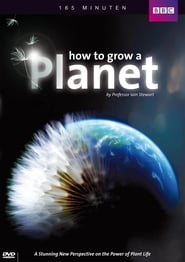
60 پەسىل
1162 Episode
Horizon - Season 39 Episode 17
250 million years ago, long before dinosaurs roamed the Earth, the land and oceans teemed with life. This was the Permian, a golden era of biodiversity that was about to come to a crashing end. Within just a few thousand years, 95% of the lifeforms on the planet would be wiped out, in the biggest mass extinction Earth has ever known. What natural disaster could kill on such a massive scale? It is only in recent years that evidence has begun to emerge from rocks in Antarctica, Siberia and Greenland. The demise of the dinosaurs, 65 million years ago (at the so-called K/T boundary), was as nothing compared to the Permian mass extinction. The K/T event killed off 60% of life on Earth; the Permian event 95%. Geological data to explain the destruction have been hard to find, simply because the rocks are so old and therefore subject to all kinds of erosion processes. It seems plausible that some kind of catastrophic environmental change must have made life untenable across vast swathes of the planet. In the early 1990s, the hunt for evidence headed for a region of Siberia known as the Traps. Today it's a sub-Arctic wilderness but 250 million years ago, over 200,000km² of it was a blazing torrent of lava. The Siberian Traps were experiencing a 'flood basalt eruption', the biggest volcanic effect on Earth. Instead of isolated volcanoes spewing out lava, the crust split and curtains of lava were released. And the Siberian flood eruption lasted for millions of years. Could volcanic activity over such a long time alter the climate enough to kill off 95% of life on Earth?
- يىل: 2024
- دۆلەت: United Kingdom
- ژانىر: Documentary
- Studio: BBC Two
- ئاچقۇچلۇق سۆز:
- مۇدىر:
- Cast:



 "
"


















